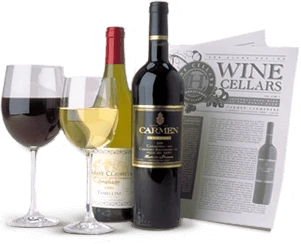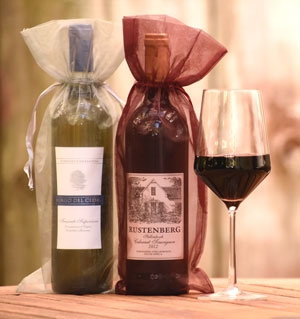
The 2014 Château Chanteloiseau Cuvée Jean Jules Graves possesses a delicate straw color, deep aromas of wild grasses, herbs and orchard fruits – peaches and apples – to delight the nose. In the mouth, the wine comes across as rich and textured from a preponderance of Semillon (60%), yet balanced with racy acidity thanks to a healthy dose of Sauvignon Blanc (40%). This stylish cuvee provides both a mouth-fulfilling glass of wine and a refreshingly dry finish. The 2014 Château Chanteloiseau Cuvée Jean Jules offers plenty of pleasure now, but it will almost certainly continue to take on depth and complexity with an additional year or two in bottle. We suggest a moderate chill (40° F) for optimal enjoyment.
The 2014 Château Chanteloiseau Cuvée Jean Jules Graves pairs well with all kinds of seafood, Asian stir fries and many foods that are normally difficult to pair with wine. Flaky white fish, sautéed scallops, grilled shrimp, crab legs, prawns and lobster all provide superb accompaniments to the Château Chanteloiseau Cuvée Jean Jules. Asian stir fries, Vietnamese noodles, fresh spring rolls, and lightly curried Thai dishes offer more superb pairings with this wine. Poultry, smoked meats, antipasti, and soft cow and goat’s milk cheeses make good companions to this Graves, too. Ripe Brie, Camembert and Comté cheese with slices of apple and pear offer an easy to prepare combination with the 2014 Château Chanteloiseau Cuvée Jean Jules. Enjoy!
Château Chanteloiseau (meaning Song of the Bird) is located near Mazères in the charming rural portion of southern Graves. The Latrille-Bonin family, proprietors of this château for several generations, are blessed with 48 hectares (118 acres) of the appellation’s deep gravel and clay soils that lend themselves to the name Graves.
Like many southern Graves estates, white wine remains the primary draw at Château Chanteloiseau, even though the property also fashions a fine red Graves. Semillon and Sauvignon Blanc, Graves’ two classic white varietals, predominate for the production of white wine. Cabernet and Merlot provide the source of the château’s red wine. Cuvée Jean Jules is Château Chanteloiseau’s special Cuvée and premier white Graves. Very little Château Chanteloiseau is exported to the United States, and Cuvée Jean Jules is making its first International Wine of the Month Club appearance.
Sauvignon Blanc is a premium white wine grape that for all intents and purposes is indigenous to Bordeaux. Yet, in Bordeaux, Sauvignon Blanc has traditionally been blended with a percentage of Semillon and sometimes Muscadelle to create a special flavor profile all of its own. This stands in contrast to the 100% varietal offerings from France’s Loire Valley, most notably from Sancerre, Pouilly-Fumé, and increasingly Menetou-Salon. Unlike Bordeaux, other French appellations have mostly followed the Loire’s lead, preferring 100% varietal bottling so as not to diminish Sauvignon Blanc’s inimitable characteristic.
Semillon, the other great white Bordeaux grape variety, was once the most cultivated French white grape. It still figures significantly in the best dry and sweet white wines of Bordeaux, most notably Graves, Pessac-Leognan, Entre-Deux-Mers, Barsac and Sauternes. In Graves it is nearly always blended with Sauvignon Blanc, where it produces the quintessential dry white wine of Bordeaux. In Barsac and Sauternes, where Semillon reigns supreme, Semillon is allowed to ripen on the vine past maturity in the hope of developing Botrytis cinerea or what some affectionately call “noble rot,” which shrivels the grapes and concentrates the nectar in each berry for the production of the world’s greatest and most expensive sweet white wines.
Graves, named for the region’s gravelly soil, is the oldest and most historic of all the Bordeaux communes. The wines of Graves also appear to be the first Bordeaux wines to be exported, with archeological evidence that Roman garrisons in Britain were the happy recipients of Bordeaux’s quintessential wines. And by the early 12th century, Graves was the most sought after wine in England and beyond for its quality as well as its proximity to the city and port of Bordeaux itself, which lay just a few kilometers from Graves.
Today, the northern section of Graves called Pessac Léognon must battle the urban sprawl that has broken out of the confines of the city of Bordeaux and spread to the nearby suburbs of Talence and Pessac. A little south of these towns lies the pastoral heart of Graves, a pretty, rural country, where vineyards mingle with pastures and pine forests. Here, life remains wedded to the land and the joys of the vine.
Graves is rightly famous for both its red and white wines, with the region’s annual wine production historically split evenly between red and white wine. White Graves is a dry, very aromatic wine that emits great freshness, along with substantial flavor. Perhaps the greatest event in Graves in the last twenty years has been the revolution that has taken hold among the producers of white Graves. Once, an obscure and expensive proposition that did not always travel well, contemporary white Graves has taken on vigor, personality and even an exotic edge that underscores the physiological ripeness that was often absent in white Graves in years past. At their best, the finest whites Graves can rival the best white wines made anywhere in the world.

Enjoy Limited Production Estate
Bottled Wines
Discover limited production estate bottled wines such as Vergenoegd's internationally
acclaimed 2005 Cabernet Sauvignon, imported exclusively for our members.


